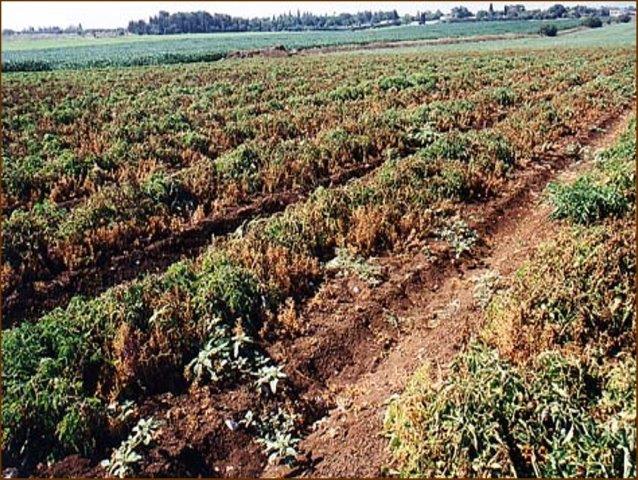Improved strategy for the control of parasitic weeds based on trans-specific gene
Parasitic weeds with beautiful flowers but most destructive to agricultural production
Radi Aly, Ph.D, Dept. of Plant Pathology and Weed Science Newe Yaar Research Center (ARO)

Broomrapes (Phelipanche and Orobanche spp.): despite their beautiful flowers they represent one of the most destructive and intractable problems to agricultural production
Broomrapes (Phelipanche / Orobanche spp.) are holoparasitic plants that subsist on the roots of a variety of agricultural crops, causing heavy damage, reducing the yield and its quality in semiarid regions of the world. Parasitic weeds are difficult to control or at present uncontrollable by conventional means due to their life style. The parasites are closely associated to the host root, concealed underground and undiagnosed until they irreversible damage the crop. Although, the simplest and most effective approach to parasitic weeds control – host resistance remains an unrealized goal for agriculture, a wide variety of parasitic weed control (chemical, biological, cultural and resistant crops) has been tried.
Unfortunately, most are partially effective and have significant limitations (labor intensive and time consuming). In fact, the best control method, which was applied several years ago, was by fumigation with methyl bromide. This method, however, is expensive, laborious, and it is now phased out because it is extremely hazardous to the environment.
The discovery of RNA silencing is one of the most important biotechnological findings of the last decade. In several organisms introduction of double-stranded (dsRNA) has proved to be a powerful tool to suppress gene expression through a process known as RNA interference (RNAi) in animals and post-transcriptional gene silencing (PTGS) in plants.
.jpg) |
In the current study, we suggest an improved strategy for the control of parasitic weeds based on trans-specific gene silencing of three parasite genes at once. To express dsRNA containing selected sequences of three Phelipanche aegyptiaca genes PaACS, PaM6PR and PaPrx1 (pma), we used a hairpin construct (pBINPLUS35:pma) (Fig. 1A) for stable expression in transgenic tomato Solanum lycopersicum (Mill.) plants.
Our results indicate that siRNA-mediated transgene-silencing (20–24 nt) was detected in the host plants (Fig. 1B) and the quantities of PaACS and PaM6PR transcripts from P. aegyptiaca tubercles grown on transgenic tomato were significantly reduced (Fig. 1C). Concomitant with the suppression of the target genes, there were significant decreases in the number and weight of the parasite tubercles that grew on the silenced-host plants.
.jpg) |
Figure 2. Phenotypes of transgenic tomato plants and P. aegyptiaca tubercles in the greenhouse pot assay. (A) Growth and appearance of a representative transgenic tomato plant (Tr) and a representative non-transgenic (non-Tr) plant growing in the greenhouse. (B) Collection of representative parasite tubercles grown on transgenic lines. (C) Collection of representative parasitic tubercles grown on non-transgenic tomato lines in pot experiment.
A. B.
 |  |
Figure. 3: Comparison between commercial tomato field, highly infected with the parasitic weed P. aegyptiaca (A) and non-infected field (B)
Furthermore, plants expressing the parasite target genes showed enhanced resistance to P. aegyptiaca as evidenced by abnormal parasite development and higher parasite mortality after attachment, as compared to non-transformed plants (Figure 2: A, B and C). These results indicate that the resistance induced in line 59 with hairpin silencing was considerable.
Since genetic resistance based on the silencing of a key gene in the parasite is now feasible therefore, alternative biotechnological approaches using siRNA could be ideal for parasitic weed control. Unlike other resistances, gene-silencing approach could be applied to various other susceptible crops, not necessarily of the same plant family. In addition, this method could be effective against a broad spectrum of broomrape species and will have implications for the control of other plant parasites and pathogens. Accordingly, advantages of the silencing technology will be: reducing labor, lowering expenses, increasing cropping choices and elimination of the need for chemicals that may be harmful to the environment.
For direct contact: radi@volcani.agri.gov.il; rucali@ucdavis.edu




